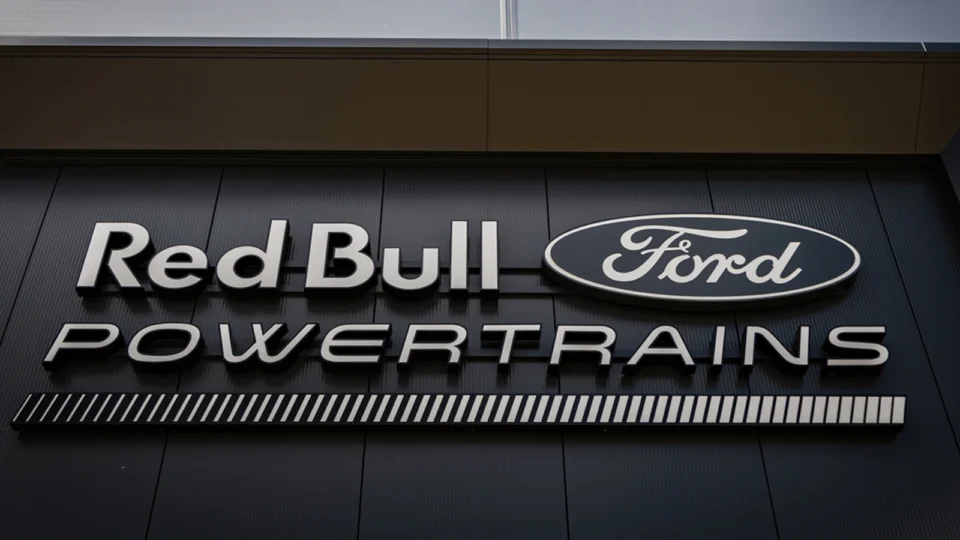Ford, a brand synonymous with motorsport and American ingenuity, is re-entering Formula 1 in partnership with Red Bull Racing to create a bespoke powertrain for the team’s cars.
The collaboration between these two motorsport powerhouses is set to redefine the landscape of the sport, and as both companies work towards the highly anticipated debut of their first powertrain, the motorsport world is holding its breath.
Ford’s return to Formula 1 is not just a triumph of engineering and innovation; it also signals a broader trend of automotive manufacturers embracing electrification and hybrid technologies, which are becoming an integral part of modern motorsport. For Ford, it’s not just about being part of the competition, but rather playing a key role in the future of the sport. The excitement surrounding this new partnership, which is now entering its developmental phase, is palpable, with the eyes of the world firmly fixed on 2026.
Ford’s Strategy for Formula 1
Ford has a storied history in motorsport, and its legacy in Formula 1 is as rich as it is extensive. The Blue Oval brand has been synonymous with motorsport for decades, contributing to numerous Formula 1 championships and shaping the landscape of racing across multiple disciplines. However, Ford’s return to Formula 1 in 2026 will be markedly different from its previous ventures.
Unlike in the past, where Ford ran its own factory-backed teams in various categories, the company is choosing not to own a Formula 1 team but instead to focus on a high-performance powertrain partnership with Red Bull Racing. This decision marks a shift in Ford’s approach to motorsport, one that emphasizes collaboration and technical prowess rather than direct team ownership.
According to Mark Rushbrook, the global director of Ford Performance, the company’s decision to enter Formula 1 was primarily driven by the evolution of the sport’s technical regulations, especially the increased focus on hybrid powertrains and electrification. Speaking at Ford’s motorsport launch event, Rushbrook explained that Ford had no desire to own an F1 team again after their previous experience. “Do we want to own a team? No, we did that once, and it didn’t work so well,” he admitted. Instead, Ford recognized that the technical developments within Formula 1, particularly the hybridization of engines, presented an opportunity to return to the sport in a more meaningful way.
The development of hybrid engines in Formula 1, as well as a general trend towards more sustainable and efficient powertrains, is a significant factor for Ford. The company sees this as an opportunity to combine their legacy in motorsport with their push towards electrification, aligning their motorsport endeavors with their broader corporate strategy.
Check also: Ford Revamps the 2025 Mustang Mach-E with High-Tech Features and a Budget-Friendly Price
The partnership was solidified after Red Bull’s original plan to work with Porsche fell through in 2022, which opened the door for Ford to step in. With Ford now involved, it is clear that Red Bull Racing and the Blue Oval are both committed to bringing a competitive and technologically advanced engine to the Formula 1 grid for the 2026 season.
A Match Made in Motorsport Heaven
The initial stages of the partnership between Ford and Red Bull Racing involved several meetings between key figures from both organizations. Mark Rushbrook reached out to former F1 CTO Pat Symonds to help facilitate the process, and soon after, he found himself on a plane to Milton Keynes for a meeting with Christian Horner, Red Bull Racing’s team principal. Despite having only 30 minutes scheduled for the meeting, the conversation stretched to over two hours, with both parties recognizing the mutual benefits of the collaboration.
Christian Horner echoed Rushbrook’s enthusiasm for the partnership, recognizing Ford’s deep-rooted connection to motorsport and its historical success in Formula 1. “Ford has such a great history in the sport,” Horner remarked, adding that it was a brand “synonymous with the U.S. and synonymous with motorsport.” Horner also spoke about the challenges ahead, acknowledging that despite the excitement, there were still many hurdles to overcome. “We’re under no illusions that we’ve got great mountains to climb,” he said, but he emphasized that Red Bull and Ford were fully committed to developing a powertrain that would be competitive from the start.
The partnership aims to deliver a powertrain that blends Ford’s engineering expertise with Red Bull Racing’s championship-winning team to create a competitive edge in the highly technical and rapidly evolving world of Formula 1.
In the lead-up to the 2026 season, both companies are focused on designing, developing, and testing a power unit that meets the new technical regulations while also maintaining Red Bull’s current dominance on the track.
Related:
Racing to Riches: Inside Formula 1’s Record-Breaking Driver Salaries of 2024
Max Verstappen Historic Fourth Title and George Russell’s Stunning Las Vegas Triumph
